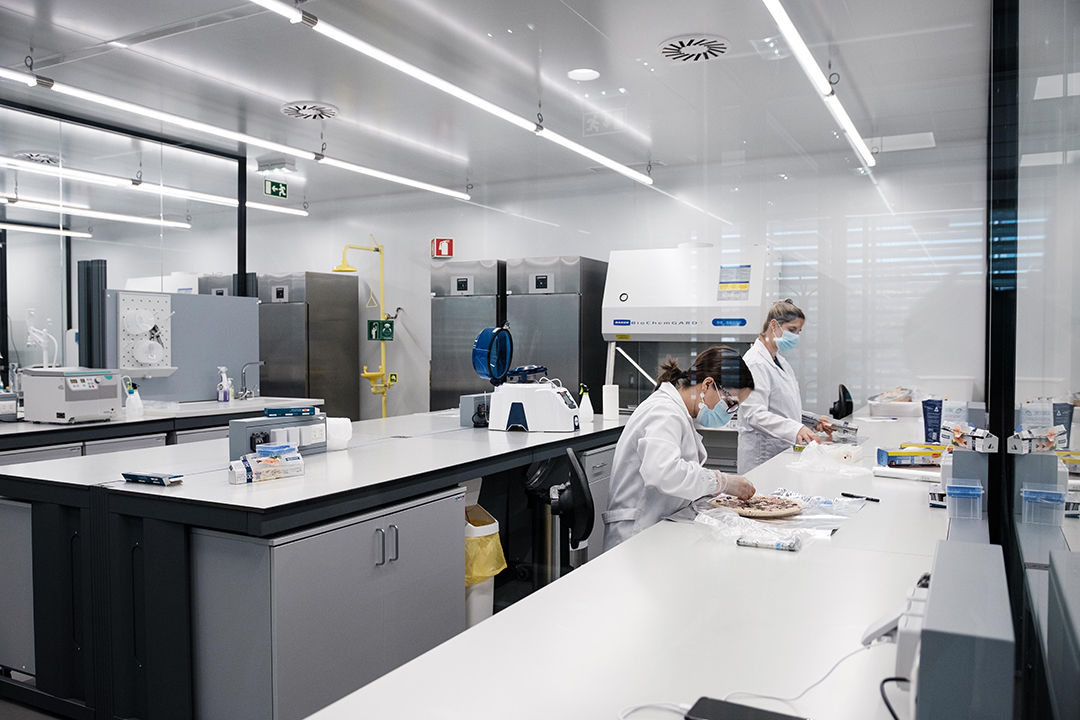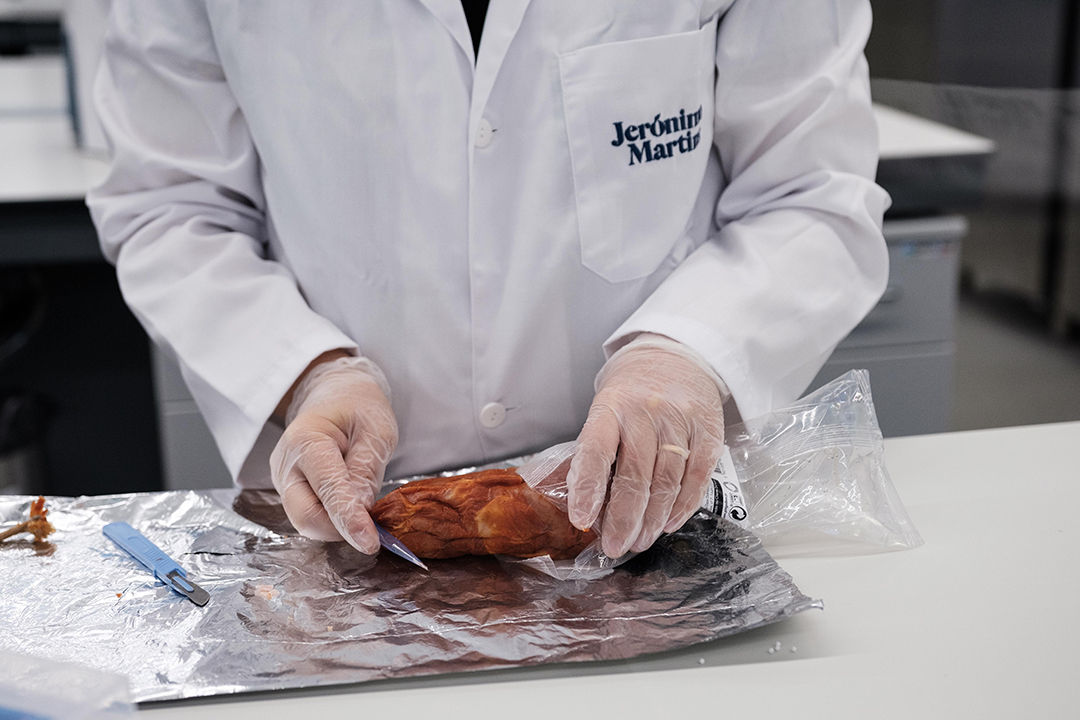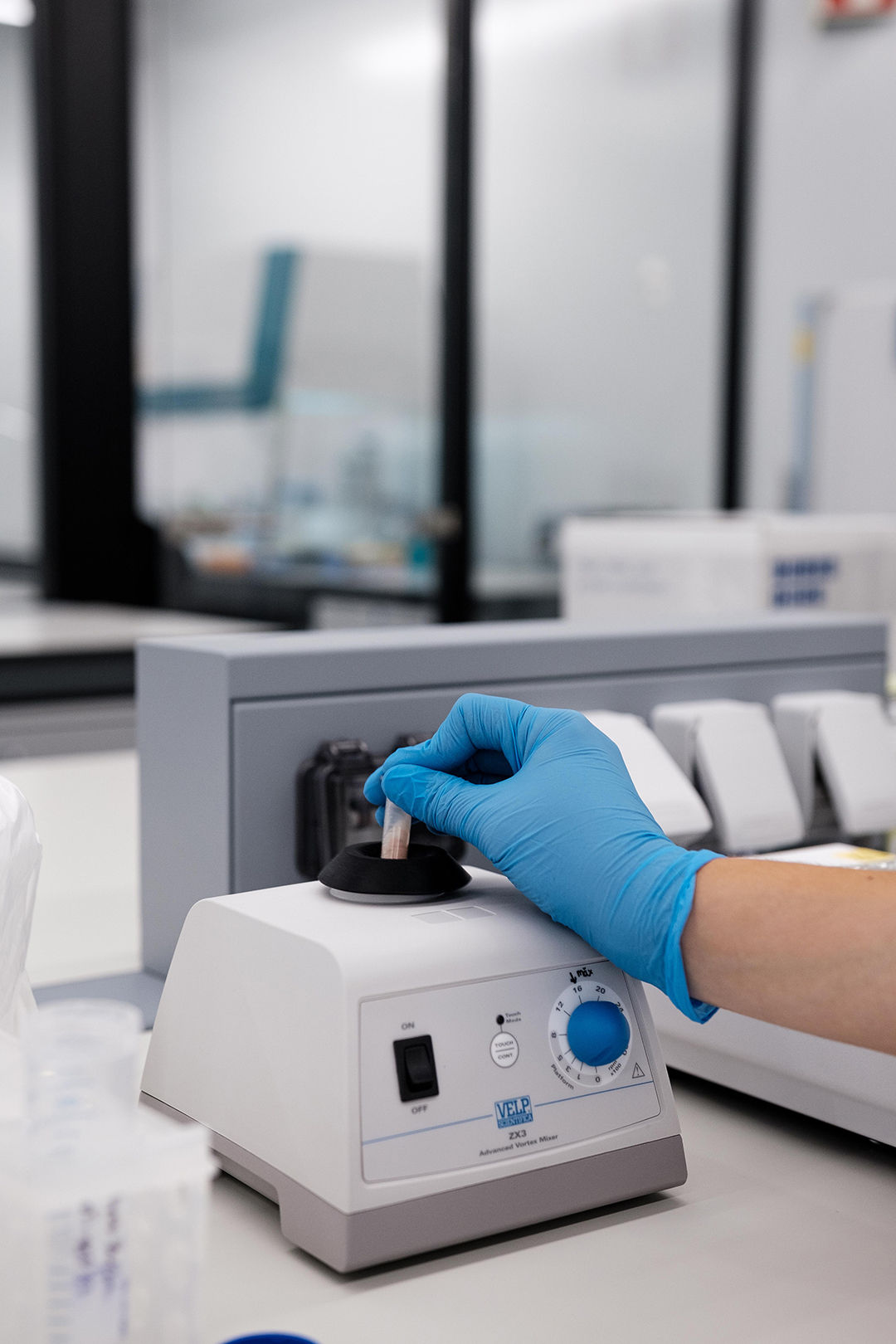
Food First
FIGHTING FOOD FRAUD
The label is probably the element that best describes all the important data about each product: its origin, typology or nutritional facts, for instance. This standardised mechanism allows consumers to make choices based on their preferences, tastes and trust. But sometimes, there is a need to go beyond the label: to fact-check what’s inside and trace the supply chain. As a food retailer with over 4,400 stores spread across three countries and two continents, the Jerónimo Martins Group has invested in state-of-the-art technology to create its very own DNA lab, the first of its kind in Portugal owned by a private corporation, and a rare investment in Europe. The plan was already in the pipeline, but gained new momentum during the pandemic: in a hurry to identify new suppliers and replenish stocks, businesses faced increasing challenges in terms of food safety and authenticity worldwide.

The Group uses the lab to test the Private Brand products for Pingo Doce, Recheio, Ara and Biedronka. This Molecular Biology Laboratory was created out of the need to increase “the ability to control authenticity and thus reduce the likelihood of fraud”. Carlos Santos, the Group’s Quality Director, added that having your own lab helps put pressure on suppliers, across the chain, to ensure they use “high-quality ingredients as agreed” in supply agreements.
SEAL OF APPROVAL
On its radar are products more susceptible to adulteration given their high commercial value (spices, teas and other plant-based products, perishables) or because possible contamination could be difficult to detect. Sofia Nogueira is in charge of the lab and explains that it conducts around 350 monthly analyses and if “adulteration is detected, the quality officer is informed that the product is not in conformity with the information provided on the label.
The quality officer then assesses this information and notifies the supplier of the irregularities”. Sofia Nogueira distinguishes between obvious fraud and unintentional cross-contamination: “at a factory that produces pork sausages and chicken sausages, there can be residue from a previous production run if the machine isn’t cleaned properly. For example, trace amounts of pork can be detected in the chicken sausages.” This means consumers could be eating products containing unspecified traces of ingredients they might be allergic to.

The real source of a food product can only be identified in a laboratory by running DNA-based PCR testing – all the rage at present. The lab uses NGS (Next-Generation Sequencing), one of the most valuable technologies today, to read the sequences of the genetic material collected. It provides a comprehensive understanding of what ingredients are used in a food product, particularly the species. There are three stages to a food analysis. The first is to extract the DNA inside the cells.
When analysing a frozen pizza, the first step is to “take a representative portion of the sample”. In this case, all the pieces of ham on the pizza. The pieces are then mixed to form a homogeneous paste so that a “portion can be extracted from that whole”. In the next stage, “the DNA obtained is copied millions of times using the PCR technique for visualisation”. Finally, the DNA is processed by a particular device that “provides DNA sequence readings and which, through comparison, allows the various animal and/or plant species in the food to be identified,” explains Sofia Nogueira.
WHAT IS FOOD FRAUD?
Food fraud is the deliberate act of substitution – totally or partially replacing high-value species with those of a lower value; dilution – mixing one substance with another of lower value; concealment – by adding unspecified substances to enhance the quality of the product; mislabelling – placing false claims about the source of an ingredient on the packaging; as well as theft and counterfeiting. Food fraud is motivated purely by profit, and the most severe public health threat on record is perhaps what happened in China: adulteration of infant formula with melamine, leading to the death of six children and the hospitalisation of 64,000 others. In Europe, cooperation between the various countries has already enabled several situations to be identified, such as the detection of around 22% cow’s milk in samples of cheese produced in Spain and sold as “100 % buffalo milk Mozzarella”.

